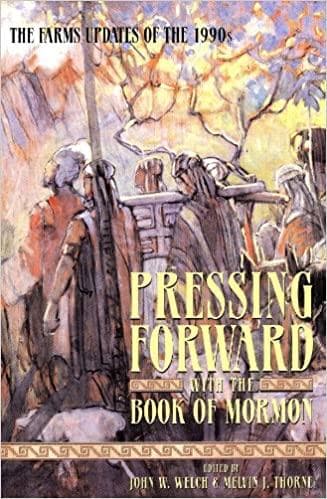Book
69 Chapters

“And there came forth poisonous serpents also upon the face of the land, and did poison many people.” (Ether 9:31)
During my lengthy residence in Israel (1971–79), I had opportunity to visit the Musa Alami Farm near Jericho. The farm had been constructed after Israel’s 1948 War of Independence to settle displaced Palestinian refugees. It was particularly geared toward teaching various farm skills to Palestinian boys. During the 1950s, the Church of Jesus Christ of Latter-day Saints had equipped the farm with a dairy and a starter herd and had sent dairy experts to operate that portion of the farm.
Much of the farm was in disrepair during our visit because of the 1967 Six-Day War. Orange groves had died from lack of water, and most of the fields lay fallow. During the war, all but two of the pumps bringing underground water to the surface had been destroyed, making it impossible to maintain the farm at its previous level. Most of the refugees had fled across the Jordan River to the kingdom of Jordan. The Israelis had also expropriated all the land on the western bank of the river in order to maintain security patrols along the new border.
Of particular interest to me was the effect on local wildlife. When crops were no longer being grown near the river, the mice moved westward to find grains in the few fields still under cultivation. They were, naturally, followed by serpents. From time to time, residents of the farm found vipers in and around their houses. This, they assured us, had never happened before the war.
My thoughts turned to the story in Ether 9:30–33, where we read that the Jaredites were plagued by “poisonous serpents” during a time of “great dearth” when “there was no rain upon the face of the earth.” Their flocks fled southward from the serpents; some of the people also escaped in that direction, but the large number of serpents “hedge[d] up the way that the people could not pass.” After the people repented, the Lord sent rain, which ended the famine, producing “fruit in the north countries” (Ether 9:35).
Several generations after the famine, “in the days of Lib the poisonous serpents were destroyed. Wherefore they did go into the land southward, to hunt food for the people of the land, for the land was covered with animals of the forest” (Ether 10:19). It was at this time that the Jaredites set aside the land southward as a game preserve (see Ether 10:21). This suggests that much of the wildlife had perished during the dearth in the land northward.
We do not know by what means—whether miraculous, natural, or by the hand of man—the serpents were eliminated. It may be that they simply dispersed throughout the region as the dearth abated, following the rodents who, in turn, were following the regenerating plant life.
A similar tale is told of the Israelites during the period of the exodus from Egypt. Soon after arriving in the wilderness, where there was “no bread, neither . . . water,” they encountered poisonous serpents “and much people of Israel died.” In this case, however, the serpents were not destroyed; instead, the Lord provided a miraculous means for the healing of those who had been bitten (see Numbers 21:5–9; see Deuteronomy 8:15; 2 Kings 18:4; John 3:14–5; 1 Corinthians 10:9; 1 Nephi 17:41; 2 Nephi 25:20). Nor was this an instance of occasional drought, for the desert into which the Israelites fled was perpetually barren. For this reason, rodents, accompanied by their serpent predators, would have been more common at the oases that became the Israelite campsites.
In reflecting on the time when Israel wandered “in a desert land, and in the waste howling wilderness” (Deuteronomy 32:10), Moses again connected poisonous serpents with conditions of “hunger, and . . . burning heat” (Deuteronomy 32:24). Similarly, Jeremiah prophesied a time when there would be “no grapes on the vine, nor figs on the fig tree, and the leaf shall fade,” a time of war, when the people would flee into the cities for defense and the Lord would “send serpents . . . and they shall bite you” (Jeremiah 8:13–17). War often brought famine in the ancient Near East. Invading armies would consume local produce and capture foodstuffs and would often trample fields of grain during combat (compare Alma 3:2). Rodents in search of food would have migrated to the cities and been followed by the serpents.
I suspect that a similar problem would have existed among the Nephites who gathered all their animals and foodstuffs in the time of Lachoneus and Gidgiddoni, making it difficult for the invading Gadianton robber band to subsist (see 3 Nephi 4). From the Book of Mormon, we cannot know for sure if the Nephites had problems with serpents at this time, for, as Mormon wrote, “there had many things transpired which . . . cannot all be written in this book . . . but behold there are records which do contain all the proceedings of this people” (3 Nephi 5:8–9). What is certain, however, is that the story of the poisonous serpents which plagued the Jaredites has a ring of truth about it.
Research by John A. Tvedtnes, originally published in the Journal of Book of Mormon Studies 6/1 (1997): 70–72.
Book
69 Chapters
Items in the BMC Archive are made publicly available for non-commercial, private use. Inclusion within the BMC Archive does not imply endorsement. Items do not represent the official views of The Church of Jesus Christ of Latter-day Saints or of Book of Mormon Central.